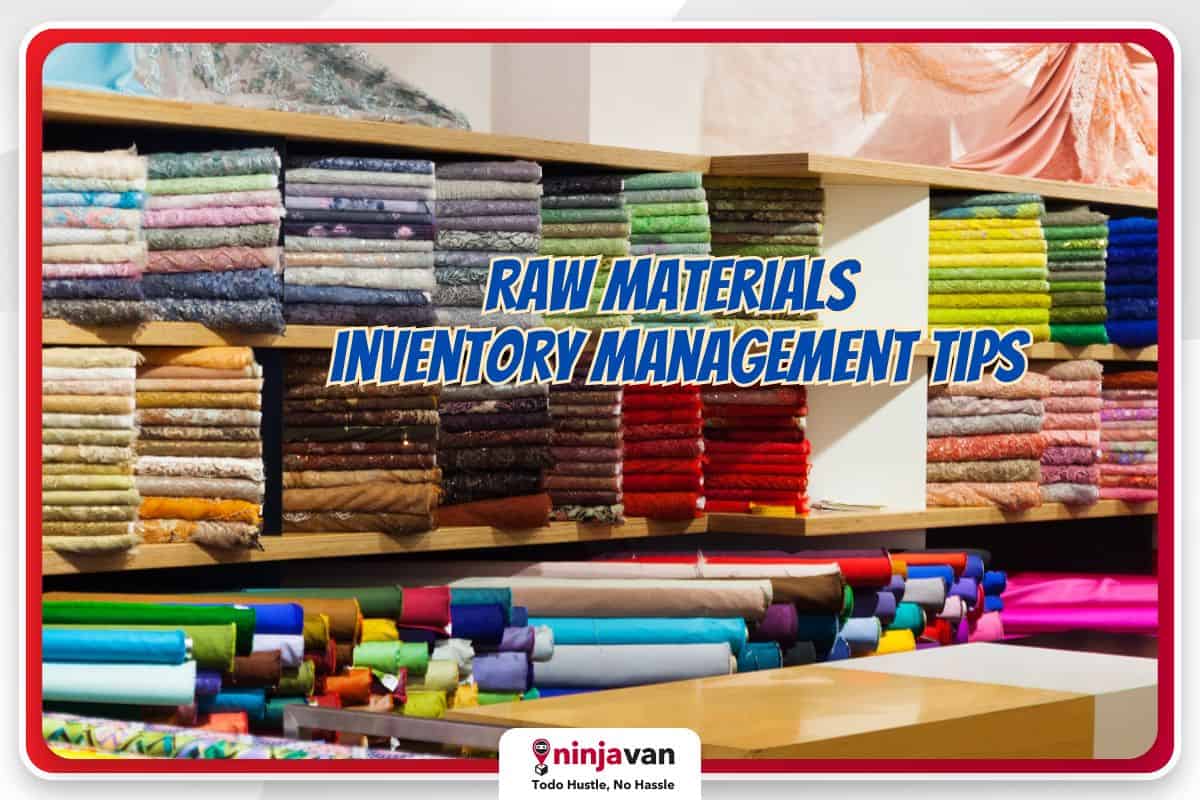Raw materials is where it all begins. The right materials will not only mean quality products but also profitability for your business. What happens when you don’t have enough raw materials to meet consumer demand? What if you have more materials than you need and now have much-needed cash tied to your inventory?
All online sellers and small business owners must know not only about raw materials inventory but also the management of it.
What are raw materials?
Raw materials are the starting point for every final product. Before they can be counted as part of your inventory, they must be assembled or processed before they become the products you ship to your customers. They can be direct or indirect.
The direct materials are part of the final product, such as the fabrics, threads, and accessories like buttons and zippers. Indirect materials are used in manufacturing your product but aren’t found on the final item, such as the sewing needles, measuring tapes, and the equipment used to create your clothing.
Raw materials vs. WIP: What’s the difference?
When doing raw materials inventory management, separate your untouched raw materials from your work-in-progress (WIP) inventory. WIP goods are those that have already entered the production process. To ensure these materials are accounted for, separate WIP goods from raw materials and finished goods.
What is raw materials inventory management?
Similar to regular inventory management in supply chain management, raw materials inventory management covers the process of handling your raw materials efficiently. Proper raw materials inventory management ensures your raw materials are accounted for and handled from your supplier to the manufacturing processes.
When handled correctly, you can manage your inventory, reduce unnecessary costs, and maximize raw materials. The steps for managing your raw materials can vary depending on what kind of raw materials you have.
The steps generally include:
- Procurement: Sourcing raw materials from your suppliers and ensuring on-time delivery. This also includes quality control, such as inspecting materials and rejecting batches that don’t meet standards.
- Storage and handling: Raw materials need proper storage to maintain their quality and avoid damage or spoilage.
- Inventory tracking: Monitoring raw materials inventory and tracking incoming and outgoing materials. Many use inventory management software for more accurate tracking.
Why is raw materials inventory management important for SMEs?
Raw materials inventory management is an essential process for small businesses because of what it can do for operations:
- Optimize resources: Small businesses have limited access to resources and manufacturing capacity. By keeping track of your raw materials, you maximize the use of your resources and avoid inventory management issues.
- Reduce costs: SMEs have limited capital to work with. Effective raw materials inventory management reduces costs, such as additional storage costs, excess stock, and wasted perishable raw materials due to overstocking.
- Efficient supply chain: A well-managed supply chain includes handling your raw materials. With real-time data on your raw materials inventory, your business can accommodate customer demands, ensure supplies are replenished, and prevent operational disruptions.
- Quality control: Small businesses need to produce quality products to build customer trust and loyalty. Raw materials inventory management allows business owners to check for quality materials before they’re sent for production. This can prevent time and other resources wasted from creating substandard products.
- Cash flow: Raw materials inventory management helps business owners determine the optimal amount of raw materials in storage. It can prevent excess inventory, waste, or the need for additional storage – which can add to the operational costs.

What are the challenges of raw materials inventory for small businesses?
Small businesses have unique challenges because of their limited resources and capacities. These common challenges include:
- Limited financial resources: Small businesses have less capital to invest in raw materials. Thus, some SMEs cannot take advantage of bulk ordering.
- Storage space: Many small business owners operate from their homes or seek cost-effective warehousing solutions. If these options aren’t available, they use just-in-time (JIT) inventory management practices to reduce the need for storage.
- Quality control: Business owners must ensure the raw materials meet their quality standards. Poor quality materials can affect the final product and customer satisfaction.
- Supplier issues: Shortages or delays in supplier deliveries can lead to production delays, price fluctuations, and disruptions within the supply chain.
Raw material inventory management tips
Here are some tips to effectively manage your raw material inventory:
- Take advantage of technology: There is plenty of software and technology available to streamline your inventory management. Invest in tracking systems, SKU systems, and other software, or work with a logistics company that can assist you with inventory management.
- Invest in warehousing solutions: Growing your business means accommodating a bigger demand, which may mean needing more inventory. Rent warehousing space, or streamline your inventory by working with a logistics company that can provide cost-effective warehousing solutions.
- Forecast demand accurately: Use your past sales data to determine demand, especially during seasonal events and holidays when suppliers may have shortages. Planning ahead of time can help you adjust your resupplies.
- Have a general reorder point: Don’t wait for your inventory to be completely gone before you reorder raw materials. Set a point when you’re running low on materials for when it’s time to reorder.
- Schedule your production efficiently: Minimize your idle time and schedule your production effectively. This minimizes your holding costs and ensures your business is operating efficiently.
- Implement JIT inventory management: JIT involves ordering from suppliers only when needed. Many small businesses adopt a JIT process as a way to reduce the cost associated with storage and holding. However, there are some risks with this process, so weigh out the pros and cons of using this method.
Raw materials, like your inventory, are crucial to maximizing your business’s resources. Manage it well, and you’ll ensure enough raw materials are available to meet demand and maintain production levels without losing operational time. Through raw materials inventory management, you achieve profitability for your business.
Boost your business with these logistics solutions:
Ninja Van Launches One-Stop B2B Services
Why You Need To A One-Stop Logistics Solution
A Fast Solution to Improve Your Stock Inventory







